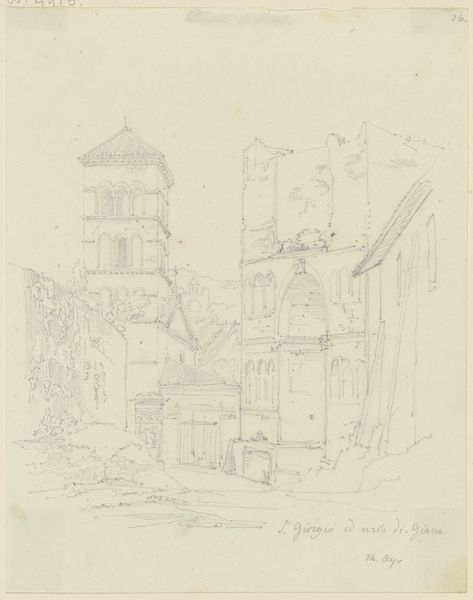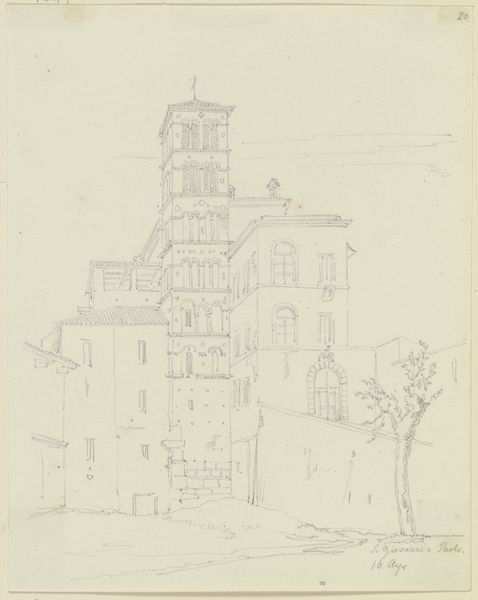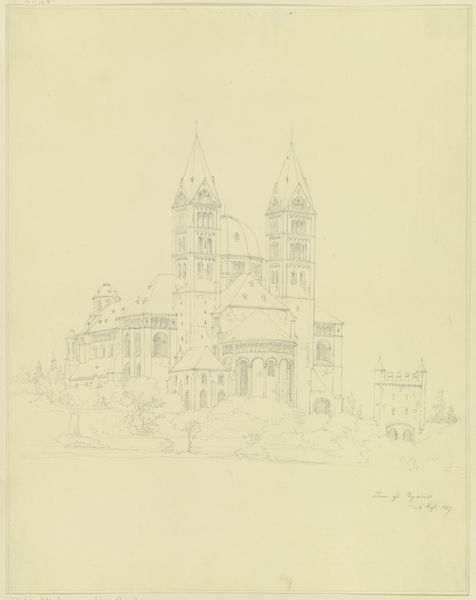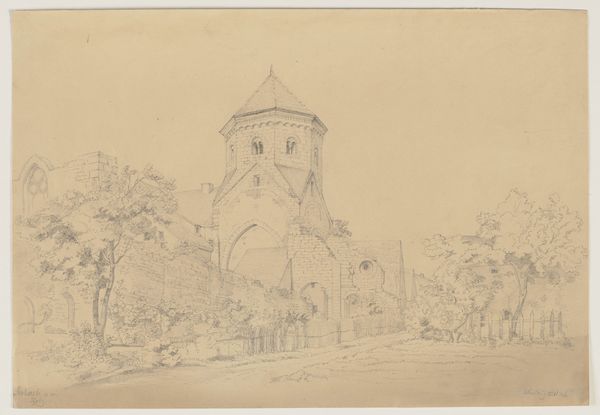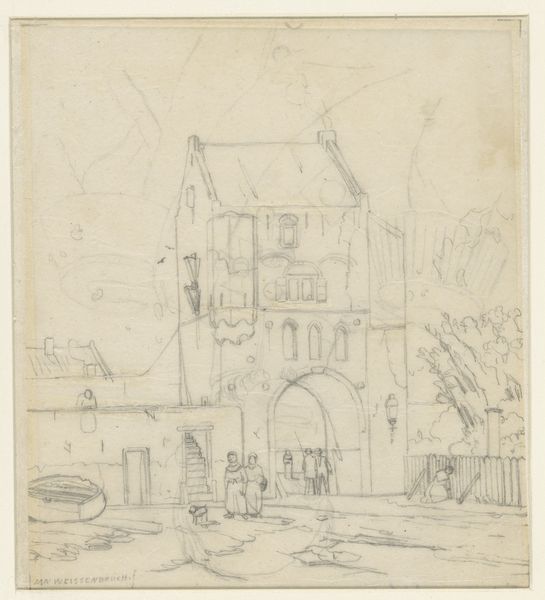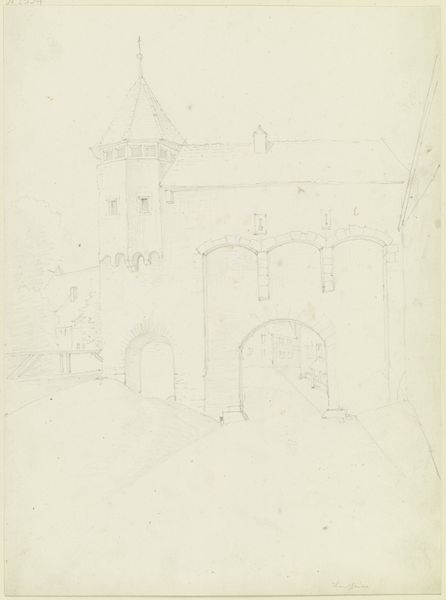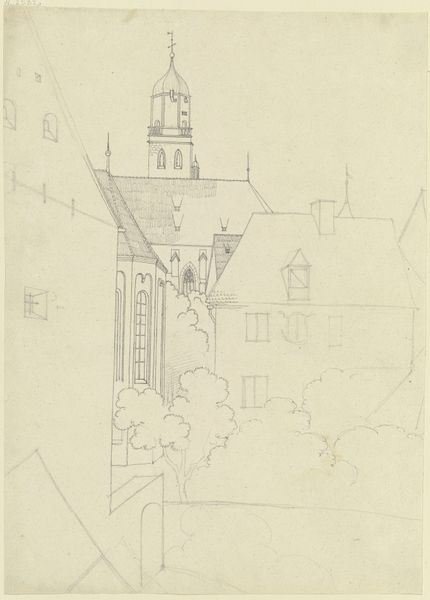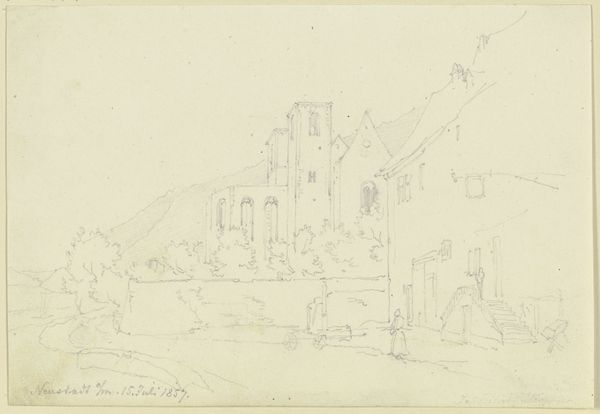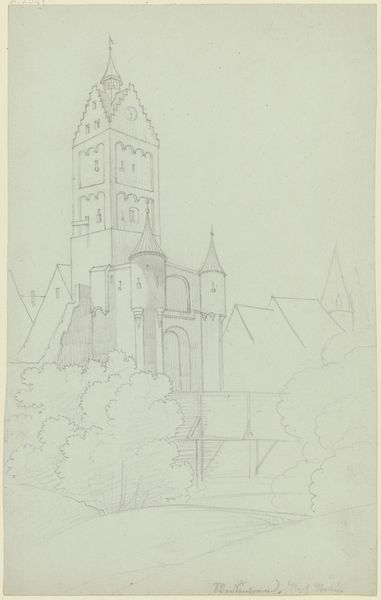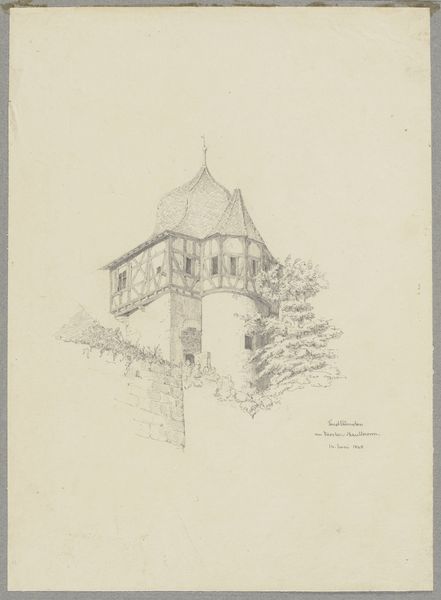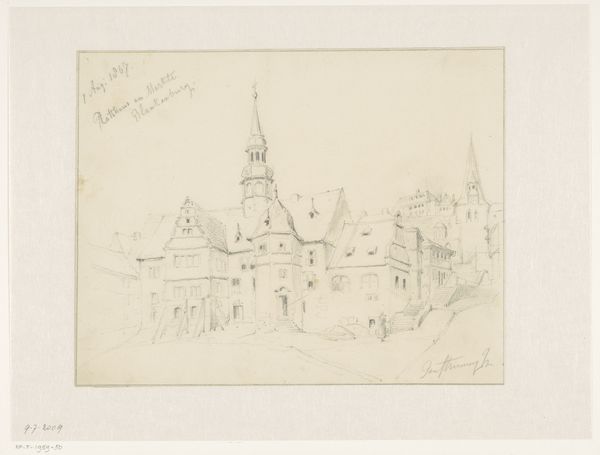
Straßendurchblick auf S. Maria Maggiore mit der Mariensäule in Rom 25 - 1828
0:00
0:00
Copyright: Public Domain
Curator: We're looking at "Straßendurchblick auf S. Maria Maggiore mit der Mariensäule in Rom" or "Street View of S. Maria Maggiore with the Marian Column in Rome" by Friedrich Maximilian Hessemer, a drawing rendered in pencil on paper. It was created in 1825. Editor: My first thought is: breath. The sketch breathes. It’s ethereal, a whisper of a place rather than a shout. Curator: Indeed, the artist's delicate application of pencil strokes lends a light, airy quality to the depiction of this famous Roman basilica. Consider the linear perspective, directing our gaze forcefully towards the grand facade. We are squarely located within Neoclassical conventions, where order and rationality govern the visual space. Editor: I feel the coolness of the stone. The light feels distinctly Roman—crisp, clear. I can almost hear the echo of footsteps in the piazza, feel the weight of history pressing down, and yet the artist's hand is so light, so tentative almost. It makes me feel as if the city is alive, still being dreamed into existence. Curator: Note, if you will, the rigorous structure, a symphony of horizontals and verticals establishing a clear proportional relationship between the buildings and monuments that frame the central church. There is a clear visual hierarchy enacted by size and placement of the different architectural forms. Editor: It's more than just lines on paper though, isn’t it? He has really captured the essence of the place—the grandeur, but also the everyday-ness. The artist offers an intimacy. There is space for our souls here, caught in the city’s silent hum. It’s beautiful in its starkness. A meditation of what endures. Curator: This street view masterfully captures the grandeur of Roman architecture while maintaining an exquisite lightness, and it reminds us that the classical tradition offered artistic possibility that was both austere, yet also romantic. Editor: It speaks volumes, using so very little. This reminds us that what an artist omits is often more potent than what is overtly shown.
Comments
No comments
Be the first to comment and join the conversation on the ultimate creative platform.
